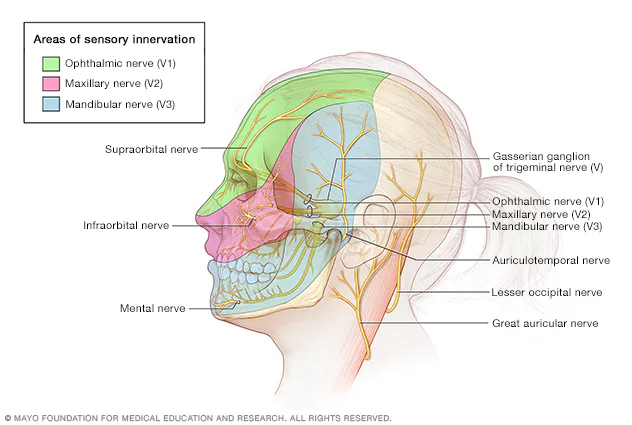- Escape from India, alliance with Axis powers
- Azad Hind Government (1943) formed in Singapore
- INA: campaigns in Imphal, Kohima
- INA trials (1945–46): mass outrage, Naval Mutiny triggered
Subhas Chandra Bose and the Forward Bloc (1939)
Background
- Political Context: By the late 1930s, the Indian National Congress was the principal organization advocating for independence from British rule. However, internal divisions were becoming apparent, particularly between the moderate and radical factions.
- Subhas Chandra Bose: A prominent leader within the Congress, Bose was known for his radical approach to achieving independence, contrasting sharply with Mahatma Gandhi’s philosophy of non-violence and civil disobedience.
Formation of the Forward Bloc
- Resignation from Congress: In April 1939, during the Tripuri session of the Congress, Bose faced significant opposition from Gandhi’s supporters, leading to his resignation as Congress President.
- Establishment: In July 1939, Bose formally launched the Forward Bloc with the intention to unite various anti-colonial factions dissatisfied with the Congress’s strategies.
Objectives
- Complete Independence: The primary aim was to advocate for complete independence from British rule.
- Social Justice: The Forward Bloc sought to address socio-economic issues, pushing for reforms that would benefit workers and farmers.
- Unity of Anti-Imperialist Forces: The Bloc aimed to consolidate all anti-imperialist elements, not just those within the Congress.
Structure
- Leadership: Bose served as the president, supported by a committee comprising members from diverse backgrounds, including labor and peasant organizations.
- Membership: The Bloc attracted a wide range of individuals, including leftists, socialists, and communists, reflecting its inclusive approach.
Ideological Orientation
- Socialism: The Forward Bloc espoused a socialist ideology, advocating for the rights of marginalized communities and economic reforms.
- Militant Resistance: Unlike the Congress’s non-violent stance, the Bloc promoted a more militant approach to resistance against colonial rule.
Activities and Mobilization
- Protests and Rallies: The Bloc organized various protests and rallies, raising awareness about social injustices and the need for reforms.
- Campaigns: Initiatives focused on labor rights, land reforms, and anti-colonial activities, seeking to mobilize mass support.
Challenges and Opposition
- Internal Divisions: The Forward Bloc faced challenges in maintaining unity among diverse leftist factions.
- Repression: The British authorities viewed the Bloc as a threat, leading to arrests and crackdowns on its activities.
Impact and Legacy
- Influence on Leftist Politics: While the Forward Bloc did not achieve the level of influence as the Congress, it laid the groundwork for leftist movements in post-independence India.
- Bose’s Vision: Bose’s ideas regarding socialism and social justice continued to resonate in Indian politics, influencing future political ideologies and movements.
Escape from India and Alliance with Axis Powers
Background
- Colonial Context: By the late 1930s and early 1940s, India was under British colonial rule, and the Indian independence movement was gaining momentum. Various factions were exploring different strategies to achieve freedom.
- World War II Impact: The outbreak of World War II in 1939 created a complex geopolitical environment. Many Indian leaders viewed the conflict as an opportunity to leverage international dynamics for India’s independence.
Subhas Chandra Bose’s Vision
- Radical Approach: Subhas Chandra Bose, a prominent leader in the Indian Nationalist movement, believed that violent resistance against British rule was necessary. He sought to forge alliances with foreign powers that opposed Britain.
- Axis Powers: Bose viewed the Axis powers—primarily Nazi Germany and Imperial Japan—as potential allies in the struggle for Indian independence due to their opposition to British colonialism.
Escape from India (1941)
- Circumstances of Escape: In 1941, after being placed under house arrest by the British authorities, Bose orchestrated a daring escape from India. He traveled through various countries, including Afghanistan and Germany, to reach his intended destination.
- Journey to Germany: Bose’s escape involved a series of covert movements and disguises, ultimately leading him to Germany, where he met with German officials to discuss support for India’s independence.
Alliance with Axis Powers
- Negotiations with Germany: Upon reaching Germany, Bose sought military and logistical support from the Nazis. He aimed to form an Indian National Army (INA) with the help of German resources, believing that a military campaign against the British would be feasible.
- Collaboration with Japan: Following his time in Germany, Bose moved to Japan in 1943, where he found more direct support for his cause. The Japanese government was interested in destabilizing British colonial rule in Asia and agreed to assist Bose in his efforts.
Formation of the Indian National Army (INA)
- Establishment: In 1942, with Japanese support, Bose formally established the Indian National Army (INA). The INA was composed of Indian prisoners of war and expatriates who joined the fight against British colonialism.
- Objectives: The INA aimed to liberate India from British rule through military action, focusing on forming a government-in-exile and rallying support from Indians both within and outside the country.
Campaigns and Military Actions
- Military Operations: The INA, under Bose’s leadership, participated in several military operations alongside Japanese forces in Southeast Asia. Notable campaigns included the invasion of British-held territories in India.
- Ideological Propaganda: Bose promoted the INA through propaganda, emphasizing the importance of unity among Indians and framing the struggle as a fight for freedom.
Challenges Faced
- Limited Resources: The INA faced significant challenges, including limited resources, poor supply lines, and the complexities of coordinating with Japanese forces.
- Post-War Consequences: After Japan’s defeat in 1945, the INA struggled for legitimacy. Many members were arrested by the British, leading to trials that garnered widespread public sympathy and support for the movement.
Legacy and Impact
- Nationalist Sentiment: Bose’s alliance with the Axis powers and his leadership of the INA inspired a sense of nationalism among many Indians. His radical approach contrasted with the more moderate strategies of other leaders and opened discussions about the means of achieving independence.
- Influence on Future Movements: Although Bose’s efforts did not lead to immediate independence, they laid the groundwork for future nationalist movements and contributed to the discourse on armed struggle against colonialism.
Azad Hind Government (1943) Formed in Singapore
Background
- Historical Context: The Azad Hind Government, also known as the Provisional Government of Free India, was formed during World War II when India was still under British colonial rule. The war created a unique political environment that prompted various nationalist factions to seek new avenues for independence.
- Subhas Chandra Bose’s Leadership: Subhas Chandra Bose emerged as a key figure in the Indian independence movement, advocating for armed struggle against British rule and seeking support from Axis powers.
Formation of the Azad Hind Government
- Proclamation: On October 21, 1943, Bose proclaimed the establishment of the Azad Hind Government in Singapore. This was a significant move aimed at formalizing the Indian independence struggle under a government-in-exile.
- Location: The government was established in Japanese-occupied Singapore, which served as a strategic base for Bose and the Indian National Army (INA).
Objectives
- Complete Independence: The primary goal of the Azad Hind Government was to achieve complete independence from British colonial rule.
- Promotion of Nationalism: It aimed to foster a sense of nationalism among Indians, both in India and abroad, encouraging unity against colonial oppression.
- Social and Economic Reforms: The government sought to address social injustices and promote economic development, envisioning a free India based on principles of equality and justice.
Structure of the Government
- Leadership: Subhas Chandra Bose served as the head of the government, holding the title of President. He was supported by a council comprising members from various backgrounds, including military leaders and political activists.
- Cabinet Composition: The cabinet included various ministers responsible for different portfolios, such as defense, foreign affairs, and finance, reflecting a comprehensive governance structure.
Recognition and Support
- International Recognition: The Azad Hind Government sought recognition from other nations, particularly those opposed to British colonialism. However, it faced challenges due to its association with the Axis powers.
- Support from the INA: The Indian National Army, which Bose led, played a crucial role in supporting the government, providing military strength and legitimacy to its claims.
Military Campaigns
- INA Operations: The Azad Hind Government coordinated with the Indian National Army to launch military campaigns against British forces in India. The INA aimed to liberate Indian territories occupied by the British.
- Battle of Imphal and Kohima: Although the INA participated in significant battles alongside Japanese forces, it faced setbacks, particularly in the Battle of Imphal and Kohima, which hindered its progress.
Challenges and Limitations
- Limited Resources: The government operated under constraints, lacking adequate resources, military strength, and international support.
- Japanese Control: The dependence on Japanese forces created tensions and limited the Azad Hind Government’s autonomy, leading to questions about its legitimacy.
Decline and Dissolution
- End of World War II: With Japan’s defeat in 1945, the Azad Hind Government lost its support base, leading to its decline.
- Dissolution: Following Japan’s surrender, the government was effectively dissolved, and many INA leaders were arrested by British authorities.
Legacy and Impact
- Symbol of Resistance: The Azad Hind Government became a symbol of the struggle for independence, inspiring future generations of nationalists.
- Post-War Influence: The trials of INA soldiers after the war garnered significant public sympathy, fueling the momentum for India’s independence, which was achieved in 1947.
Indian National Army (INA): Campaigns in Imphal and Kohima
Background
- Context of World War II: The Indian National Army (INA), led by Subhas Chandra Bose, was formed to fight against British colonial rule in India with support from Axis powers, primarily Japan.
- Strategic Importance: The campaigns at Imphal and Kohima in 1944 were part of the larger Japanese U-Go offensive aimed at capturing northeastern India, which was considered critical for disrupting British supply lines and facilitating further advances into India.
Objectives of the Campaigns
- Capture Strategic Locations: The primary goal was to capture the cities of Imphal and Kohima, which would enable control over key supply routes and improve the logistical capabilities of the INA and Japanese forces.
- Disrupt British Forces: By taking these locations, the INA aimed to weaken British military presence in the region and inspire a broader uprising among Indians against colonial rule.
Campaign at Imphal
- Initial Assault: The campaign began in March 1944, with Japanese and INA troops launching an assault on Imphal. The plan involved a two-pronged attack, with one force advancing from the east and another from the north.
- Challenges Faced: The campaign faced significant challenges, including difficult terrain, logistical issues, and fierce resistance from British and Commonwealth forces. The British had fortified their positions in and around Imphal.
- Stalemate and Retreat: As the battle progressed, the INA and Japanese forces encountered supply shortages and increasing casualties. By June 1944, the offensive stalled, and ultimately, the INA was forced to retreat due to a lack of reinforcements and dwindling resources.
Campaign at Kohima
- Strategic Defense by British Forces: Kohima was crucial as it served as a key defensive position for British forces. The battle for Kohima commenced shortly after the fighting at Imphal, with both sides recognizing its importance.
- Intense Fighting: The fighting at Kohima was marked by brutal close-quarters combat. The British, reinforced by Indian and other Commonwealth troops, put up a determined defense, leading to heavy casualties on both sides.
- Turning Point: The battle became a turning point in the larger context of the Burma Campaign. The British forces managed to hold Kohima, and by April 1944, the INA’s position became increasingly untenable.
Outcomes of the Campaigns
- Defeat of INA: The failure to capture Imphal and Kohima marked a significant defeat for the INA and Japanese forces. The campaigns resulted in heavy losses, both in terms of personnel and morale.
- Impact on the INA: The setbacks in these campaigns weakened the INA’s military capabilities and diminished its influence. Many soldiers were demoralized by the defeats, and the organization struggled to maintain cohesion.
Legacy and Significance
- Symbol of Resistance: Despite the military failures, the campaigns contributed to the narrative of resistance against British rule. They highlighted the resolve of the INA and its commitment to the cause of Indian independence.
- Post-War Sentiment: The trials of INA members after World War II sparked significant public sympathy and outrage, contributing to a growing anti-colonial sentiment in India. The sacrifices made during these campaigns played a role in galvanizing support for the independence movement.
INA Trials (1945–46): Mass Outrage and Naval Mutiny
Background
- Context of World War II: The Indian National Army (INA), led by Subhas Chandra Bose, had fought against British colonial rule during the war. After Japan’s defeat in 1945, many INA soldiers were captured by British forces.
- Formation of the Trials: In late 1945, the British government decided to conduct trials for several INA officers, accusing them of waging war against the King and treason. These trials were intended to serve as a warning against anti-colonial sentiments and actions.
The INA Trials
- Trial Proceedings: The trials began in November 1945 and involved prominent INA leaders, including Major General Shah Nawaz Khan, Colonel Prem Sahgal, and Lieutenant Colonel Gurbaksh Singh Dhillon.
- Charges Against INA Leaders: The accused faced charges of treason, conspiracy, and waging war against the British Crown. The proceedings were marked by high public interest and media coverage.
- Public Sentiment: The trials became a focal point for nationalist sentiments, with widespread support for the INA leaders among the Indian populace. Many viewed the trials as unjust and a repressive measure by the British.
Mass Outrage
- Public Protests: As news of the trials spread, mass protests erupted across India. Students, workers, and political leaders organized demonstrations, rallies, and strikes in solidarity with the INA.
- Nationalist Mobilization: The trials galvanized various segments of society, leading to a surge in nationalist fervor. Prominent leaders from different political factions condemned the trials, uniting diverse groups against British colonial rule.
- Media Coverage: Newspapers and publications extensively covered the trials, highlighting the bravery of INA leaders and portraying them as heroes in the struggle for independence. This media portrayal further fueled public outrage.
The Naval Mutiny of 1946
- Background: The discontent within the Indian Navy had been brewing due to poor working conditions, low pay, and racial discrimination. The INA trials acted as a catalyst for this existing unrest.
- Triggering Event: On February 18, 1946, sailors aboard the HMS Talwar in Mumbai (then Bombay) refused to obey orders, protesting against the treatment meted out to INA prisoners and demanding better conditions.
- Spread of Mutiny: The mutiny quickly spread to other ships and naval bases, involving thousands of sailors. It was marked by strikes and protests against British officers, who were often subjected to violence and intimidation.
Government Response
- Suppression of the Mutiny: The British government responded with force, deploying military personnel to suppress the uprising. The situation escalated into violent confrontations, resulting in casualties on both sides.
- Negotiation Attempts: In response to the scale of the mutiny and the widespread unrest, the British government attempted to negotiate with the sailors, but trust was severely eroded.
Legacy of the Trials and Mutiny
- Impact on Independence Movement: The INA trials and the naval mutiny significantly influenced the trajectory of the Indian independence movement. They showcased the growing discontent with British rule and the willingness of Indians to resist oppression.
- Shift in British Policy: The events led to a reassessment of British policies in India. The British government recognized the need for reforms and began to consider a transition towards Indian self-governance.
- Symbol of Resistance: The trials and mutiny became symbols of resistance against colonial rule, inspiring future movements and emphasizing the importance of unity among Indians in the fight for independence.
MCQ:-
1. [2019 – Set D, Q.51]
Question: With reference to the Indian National Army (INA), consider the following statements:
The INA was formed in 1942 under the leadership of Subhas Chandra Bose.
The INA fought alongside the Japanese army against the British.
The INA trials took place at the Red Fort in Delhi.
Which of the statements given above is/are correct?
(a) 1 and 2 only
(b) 2 and 3 only
(c) 1 and 3 only
(d) 1, 2 and 3
Answer: (b) 2 and 3 only
2. [2018 – Set D, Q.29]
Question: With reference to the Indian freedom struggle, consider the following events:
- Mutiny in Royal Indian Navy
- Quit India Movement launched
- INA trial
- Tebhaga movement
Which is the correct chronological sequence of the above events?
(a) 2-1-3-4
(b) 2-3-1-4
(c) 4-2-1-3
(d) 1-2-3-4
Answer: (b) 2-3-1-4
3. [2014 – Set A, Q.27]
Question: The ‘Red Fort Trial’ of 1945 refers to:
(a) Trial of INA officers
(b) Trial of Bhagat Singh and Batukeshwar Dutt
(c) Trial of Royal Indian Navy mutineers
(d) Trial of Subhas Chandra Bose
Answer: (a) Trial of INA officers
4. [2011 – Set A, Q.48]
Question: During the Indian Freedom Struggle, who of the following raised an army called “Free Indian Legion”?
(a) Lala Hardayal
(b) Rash Behari Bose
(c) Subhas Chandra Bose
(d) V.D. Savarkar
Answer: (c) Subhas Chandra Bose
5. [2009 – Set A, Q.93]
Question: During the Indian Freedom Struggle, the Indian National Army (INA) came into existence in 1943 in:
(a) Japan
(b) Then Burma
(c) Singapore
(d) Then Malaya
Answer: (c) Singapore








